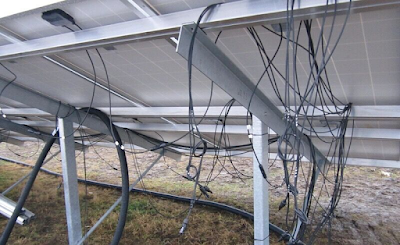Can Solar Cables Be Used in Off-Grid Systems?
Solar Cables
In the realm of renewable energy, solar power stands out as a beacon of hope for a sustainable future. With its ability to harness the sun's energy and convert it into electricity, solar panels have become increasingly popular, not just for grid-tied systems but also for off-grid setups. However, when it comes to setting up off-grid solar systems, one crucial component often overlooked is the choice of electrical cables. In this article, we delve into the question: Can solar cables be used in off-grid systems? Specifically, we'll explore the relevance of electrical cable Australia and examine the suitability of innovative solutions like Znergy Cable for off-grid solar applications.
Understanding Off-Grid Solar Systems
Off-grid solar systems, also known as standalone systems, operate independently of the main power grid. They are typically used in remote areas where access to the grid is either unavailable or prohibitively expensive. These systems consist of solar panels, a charge controller, batteries for energy storage, an inverter, and various electrical components to distribute power.
Unlike grid-tied systems that feed excess energy back into the grid, off-grid systems must store surplus electricity in batteries for later use, making efficient energy management crucial. Every component plays a vital role in ensuring the system's reliability and performance, including the electrical cables that connect these components.
Importance of Quality Electrical Cables
Electrical cables serve as the lifeline of any solar power system, facilitating the flow of electricity from the solar panels to the batteries and other components. In off-grid systems, where efficiency and reliability are paramount, the choice of cables becomes even more critical.
Australia, with its diverse climate and geographical conditions, presents unique challenges for electrical installations. Harsh weather conditions, including extreme temperatures, UV exposure, and moisture, can accelerate cable degradation if not adequately addressed. Therefore, selecting cables designed to withstand such conditions is imperative for the longevity and safety of off-grid solar systems.
The Case for Znergy Cable
Amidst the myriad of options available in the market, Znergy Cable emerges as a promising solution for off-grid solar installations in Australia. Engineered to meet the stringent demands of the Australian environment, Znergy Cable boasts a range of features that make it an ideal choice for off-grid systems:
Weather Resistance: Znergy Cable is designed to withstand the harsh Australian climate, offering exceptional resistance to UV radiation, extreme temperatures, and moisture ingress. This ensures long-term reliability and minimal maintenance requirements, even in remote off-grid locations.
Durability: With high-quality materials and superior construction, Znergy Cable exhibits excellent durability, capable of enduring mechanical stress and environmental factors without compromising performance. This longevity translates to reduced downtime and operational costs over the system's lifespan.
Efficiency: Optimal electrical conductivity and low resistance are paramount for efficient power transmission in off-grid systems. Znergy Cable's advanced design minimizes energy losses, maximizing the system's overall efficiency and ensuring maximum power delivery to critical loads.
Safety Compliance: Meeting stringent safety standards is non-negotiable when it comes to electrical installations. Znergy Cable adheres to relevant Australian standards and regulations, providing peace of mind regarding the safety and compliance of off-grid solar systems.
Compatibility with Off-Grid Solar Systems
One of the primary concerns when using solar cable in off-grid systems is their compatibility with the unique requirements of standalone setups. While some cables are specifically tailored for grid-tied applications, Znergy Cable is designed with the versatility to cater to both grid-connected and off-grid installations.
Whether it's connecting solar panels to charge controllers, interconnecting batteries, or linking the inverter to the distribution system, Znergy Cable offers the flexibility and performance needed for seamless integration into off-grid solar setups. Its robust construction and reliable performance ensure uninterrupted power flow, even in remote and demanding environments.
Cost Considerations and Long-Term Benefits
When evaluating the suitability of solar cables for off-grid systems, cost is often a significant factor. While premium options like Znergy Cable may entail a higher initial investment compared to conventional alternatives, the long-term benefits far outweigh the upfront costs.
By investing in high-quality cables designed for durability and reliability, off-grid system owners can mitigate the risks of premature failures and costly maintenance. Moreover, the efficiency gains achieved through optimal power transmission translate to increased energy harvest and enhanced system performance over time, ultimately delivering greater returns on investment.
Conclusion
In conclusion, the choice of electrical cables plays a pivotal role in the performance, reliability, and safety of off-grid solar systems. While conventional cables may suffice for certain applications, investing in specialized solutions like Znergy Cable offers unparalleled benefits for off-grid installations, particularly in the challenging Australian environment.
With its robust construction, weather resistance, and efficient performance, Znergy Cable stands as a testament to innovation in the field of renewable energy infrastructure. By prioritizing quality and reliability in cable selection, off-grid system owners can ensure the longevity and optimal operation of their solar setups, paving the way for a sustainable and energy-independent future.
Visit also:




Comments
Post a Comment